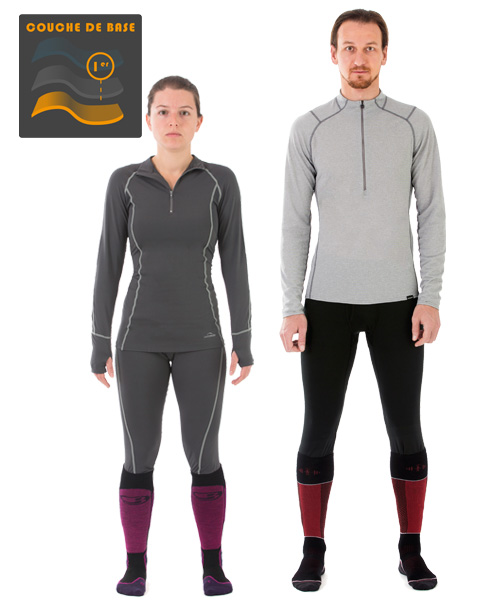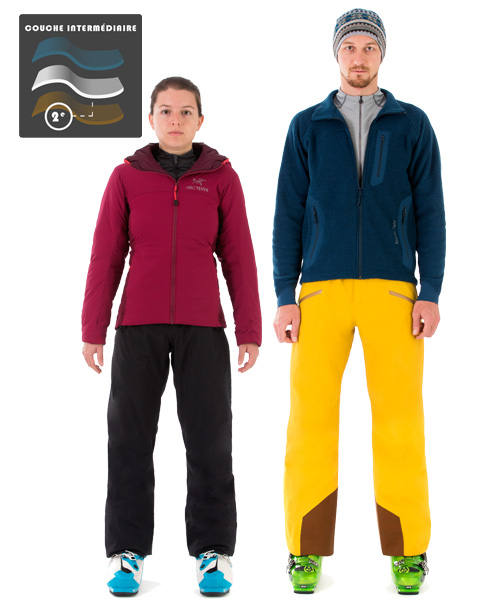Layering: an introduction
January 2, 2016
The thermometer could dip to zero, the sweat poured off you from the very first minutes of your favourite winter sport. It seems that there’s no such thing as bad weather, just people badly dressed…
Fortunately, you will no longer be a part of this last category after you have read this post, because we describe below the famous multi-layer system, also called the “onion peel” approach. Sound familiar?
In a nutshell
Apart from the fact that it allows you to easily adapt to the temperature by adding or removing layers of clothing – just as onion skins – depending on weather conditions or your degree of intensity, the multi-layer system follows the same idea as connecting vessels. That means: the first layer of clothing, which is in direct contact with your skin, will wick away moisture from your body in order to transmit it to the second layer, which will direct it again to the third and last layer. As it drives out the moisture to the outside air, this system will ensure to keep you dry while preserving your body heat.
The base layer
The undergarment, or base layer, has to be very absorbent. Therefore, it is preferred to use polyester fabrics, for quick drying, instead of cotton tracksuits which do not allow the proper evaporation of sweat - and completely freeze your skin when wet!

Image source: La Cordée
The mid-layer
The mid-layer, on the other hand, provides insulation and helps to maintain the body heat. Here, the polar fleece is your best friend, even though synthetic fibre remains widespread.

Image source: La Cordée
The outer layer
Last but not least, the outer layer (the shell) protects you from all seasonal conditions. It should have some wind and water repellent qualities, but still be breathable enough to wick away the moisture into the environment.

Image source: La Cordée
You're all set!
There you go! Now you’re ready to tackle the effects of Mother Nature. Still, keep in mind that the thickness of your layered clothes also depends on the activity. Snowshoeing and alpine skiing, for instance, require very different equipment. Well, now that you’re comfortably dressed for any winter sports, have fun!
Back